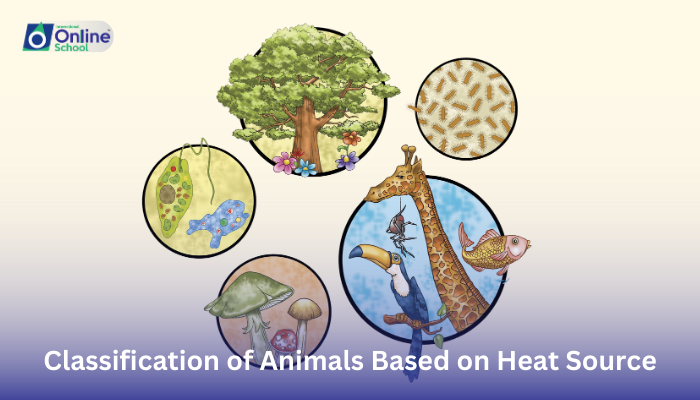
Learning Outcomes:
i. Classify animals as ectotherms or endotherms based on their heat source.
ii. Explain the characteristics and adaptations of ectothermic and endothermic animals.
iii. Analyze the advantages and disadvantages of each heat source classification.
Introduction:
Have you ever noticed how lizards bask in the sun to warm themselves up? Or how birds maintain a constant body temperature regardless of the external environment? The difference in temperature regulation strategies between different animal groups is fascinating. In this lesson, we will explore how animals are classified based on the source of their body heat, focusing on ectotherms and endotherms.
i. Ectotherms vs. Endotherms
Animals can be categorized into two main groups based on their primary heat source:
Ectotherms: (meaning "external heat") These animals rely on external sources to regulate their body temperature. They absorb heat from the environment, such as sunlight, warm water, or contact with warm surfaces. Examples of ectotherms include:
Reptiles (lizards, snakes, turtles)
Amphibians (frogs, toads, salamanders)
Fish
Insects
Most invertebrates
Endotherms: (meaning "internal heat") These animals generate their own body heat through internal metabolic processes. They have a high metabolic rate and well-developed insulating structures, such as fur, feathers, or blubber. Examples of endotherms include:
Mammals (humans, dogs, cats, whales)
Birds
ii. Adaptations and Advantages/Disadvantages
Each heat source classification comes with its own set of adaptations and benefits:
Ectotherms:
Adaptations: Ectotherms have various adaptations to optimize heat gain and loss. For example, reptiles bask in the sun to warm up, while amphibians seek shade to cool down. Some ectotherms can even change color to absorb or reflect heat more efficiently.
Advantages: Ectotherms require less energy to survive compared to endotherms. This is particularly beneficial in resource-limited environments.
Disadvantages: Ectotherms are more susceptible to fluctuations in environmental temperature. They may become sluggish or inactive in cold environments and overheat in hot environments.
Endotherms:
Adaptations: Endotherms have well-developed mechanisms for generating and retaining heat. They have a high metabolic rate, insulating structures like fur or feathers, and efficient cardiovascular systems to regulate heat distribution.
Advantages: Endotherms are not as dependent on external temperatures as ectotherms. They can maintain a constant body temperature, allowing for greater activity levels and survival in a wider range of environments.
Disadvantages: Endotherms require a significantly higher energy intake to maintain their body temperature. This can be challenging in environments with limited food availability.
The classification of animals based on heat source provides a valuable insight into their adaptations and ecological niches. Understanding the differences between ectotherms and endotherms helps us appreciate the diverse strategies animals employ to survive in a world with varying temperatures.